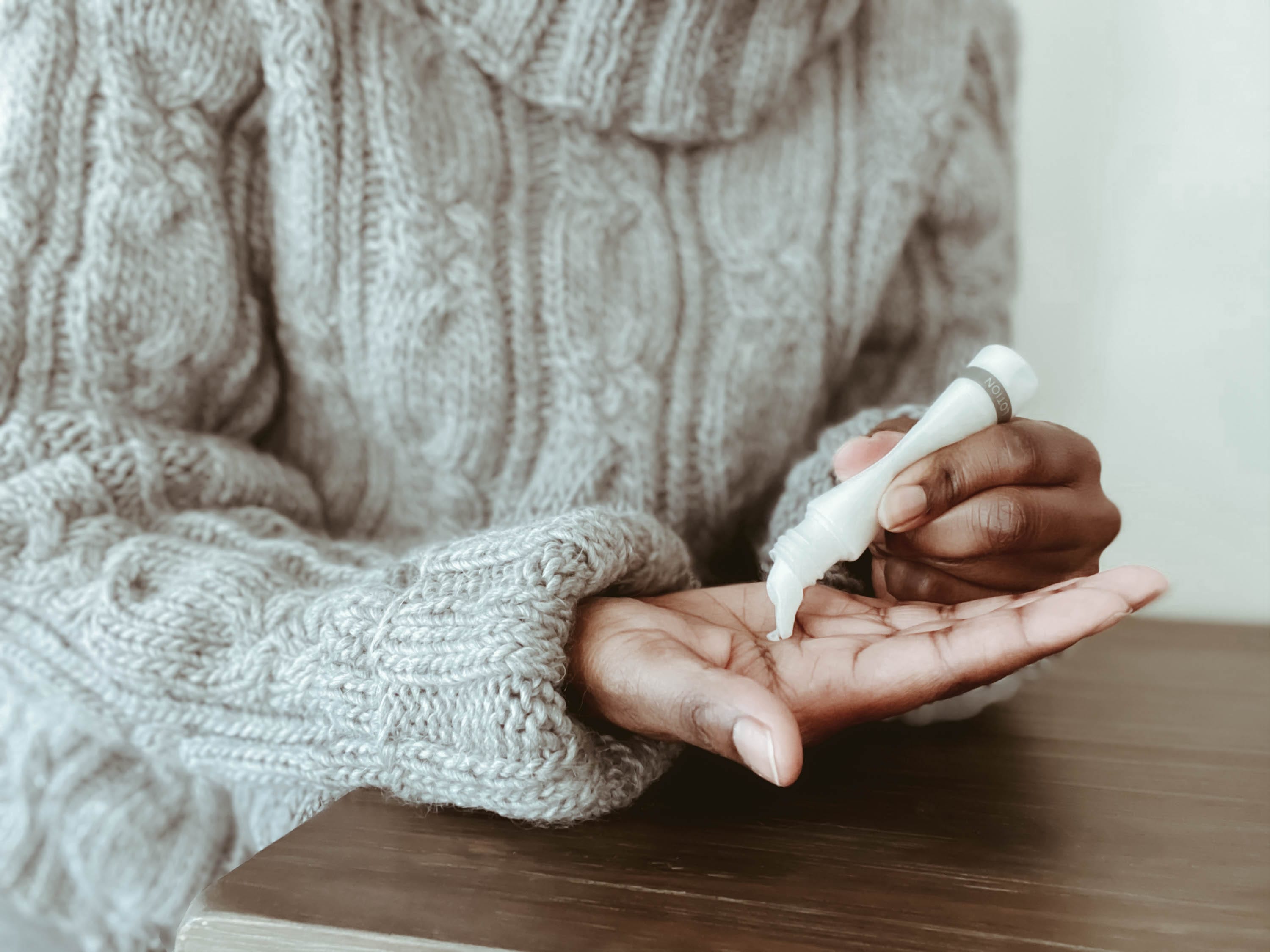This is not a good time for hands. After a year of incessant washing, obsessively squirting with hand sanitizer, and regularly handling an endless stream of disinfectant wipes, the skin on our hands has been under constant (though very necessary) assault. Combine that with the dry, cracked skin that normally occurs in the cold, dry winter months and it’s a wonder our hands have survived at all. “With all of the handwashing and alcohol-based hand sanitizer use, we are seeing a huge increase in cases of hand dermatitis,” says Dr. Hadley King, a board-certified dermatologist in New York and clinical instructor of dermatology at the Weill Medical College of Cornell University.
If the skin on your hands is getting dry and irritated, you shouldn’t stop washing — we are still in the midst of a pandemic, and frequently washing or sanitizing your hands is still one of the most effective ways to keep you and your loved ones safe. But there are plenty of things you can do to mitigate the damage and show your hands some TLC.
Reevaluate your soap and sanitizer
The alcohol found in hand sanitizers can strip the skin of its moisture — and the Centers for Disease Control and Prevention advises that you always use a hand sanitizer that contains at least 60 percent alcohol. You shouldn’t skimp on this, as this is the minimum amount of alcohol needed to kill germs (which is obviously why you’re washing your hands). But you can look for a hand sanitizer that also contains moisturizing ingredients, says Dr. King, such as aloe, hyaluronic acid or vitamin E. (Essential oils are also commonly used in hand sanitizers but these can trigger “allergic contact dermatitis” if you have sensitive skin, says Dr. King.)
The same goes for soap. “It’s fine to use a gentle soap as long as you wash your hands for at least 20 seconds,” says Dr. King. According to the FDA, there’s no germ-killing advantage to using an antibacterial soap — “it’s the combination of soap plus mechanical disruption that works to rid hands of the virus,” Dr. King explains.
Look for soaps with hydrating ingredients (same as above) to be gentle on hands or try goat milk soap — a creamy natural soap made from goat’s milk that doesn’t strip the skin of its natural fatty acids when you lather.
Use lukewarm water
“Detergents can strip the skin of oils and lead to dryness and irritation, but water alone is enough to dry out the skin as well,” says Dr. King. Especially hot water. Keep the temperature mild when you rinse to help save your skin.
Moisturize, moisturize, moisturize
If you’re not someone who keeps a tube of hand cream stashed in your desk (and on your nightstand, and in your purse), now’s the time. Immediately after sanitizing or washing and before hands are dry (this is key), apply moisturizer to help lock in hydration.
“Moisturizers for the hands, as well as for any other areas of skin, ideally contain three components: humectants, emollients, and occlusive — all three components will be very important for those with dry skin,” says Dr. King.
- Humectants, like hyaluronic acid and glycerin, work by binding water to the outer layer of the skin to inject moisture at a molecular level. To seal that moisture in, however, they need to work with the other two components.
- Emollients, like squalene, fatty acids, fatty alcohols, and ceramides, help promote “skin barrier function, membrane fluidity, and cell signaling,” says Dr. King. Translation: they help improve skin texture and appearance.
- Occlusives, like petrolatum, beeswax, mineral oil, silicones, lanolin, and zinc oxide, seal in moisture by creating a physical barrier that blocks transdermal water loss.
Bring in backup
If your hands are really dry, or if you work in a field that has you washing and sanitizing dozens of times a day, you may need to level up your moisture game. “Wearing cotton gloves over a heavy hand moisturizer while you sleep can increase penetration of the ingredients and help to moisturize,” says Dr. King. Hand masks (the gloves version of sheet masks) can also help deliver a major dose of moisture. Just make sure you’re still moisturizing with hand cream throughout the day, Dr. King adds.
If you’re really desperate, you may be curious about hyaluronic acid injections for the hands — if hyaluronic acid works topically, why not up the ante? Dr. King says this procedure is typically intended for more aesthetic purposes; by helping to plump up the back of the hands, the injections can reduce signs of aging. But theoretically, it could help with chronic dry skin. “The idea is that a thin layer of microdroplets of hyaluronic acid is injected beneath the skin surface, where it draws water and provides long-term deep hydration,” explains Dr. King. If you’re interested, talk to your derm.
We only recommend products we have independently researched, tested, and loved. If you purchase a product found through our links, Sunday Edit may earn an affiliate commission.







